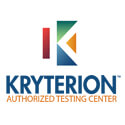Identity with Windows Server 2016 (70-742)
About This Course
This MS Windows Server 2016 certification course prepares you for the renowned MS 70-742 exam. The exam covers in-depth about Active Directory and related technologies within the Windows Server 2016 domain. It also teaches you about PowerShell.
The coursework focuses on configuration and installation of AS DS (Active Directory Domain Services) in the Windows Server 2016 environment. The course also covers Web Application proxy, AD FS and group policy implementation. Most importantly, it covers the essential topics to help you clear the 70-742 exam.
Who Should Attend This Course
Professionals who can take up this course are the ones who manage identities using functionalities in Server 2016. The course is apt for professionals involved in installing, configuring, managing, and maintaining Group Policy Objects (GPOs) and Active Directory Domain Services (AD DS).
Why This Course
This MS Windows Server 2016 certification course prepares you for the renowned MS 70-742 exam. The exam covers in-depth about Active Directory and related technologies within the Windows Server 2016 domain. It also teaches you about PowerShell.
After completing the course, you learn the following:
- Configuring and installing Active Directory Domain Services (AD DS)
- Maintaining and managing AD DS
- Managing Group Policy
- Implementing Active Directory Certificate Services (AD CS)
- Implementing access solutions and identity federation
Course Objectives
The course covers the following key exam objectives:
- Install/configure Active Directory Domain Services (AD DS)
- Manage AD DS
- Manage Group Policy
- Implement Active Directory Certificate Services (AD CS)
- Implement access solutions and identity federation
Course Prerequisites
Professionals enrolling for this course ought to have some amount of experience in Windows server/ client environment and fundamentals of server administration.
Course Benefits
After completing the course, you learn the following:
- Configuring and installing Active Directory Domain Services (AD DS)
- Maintaining and managing AD DS
- Managing Group Policy
- Implementing Active Directory Certificate Services (AD CS)
- Implementing access solutions and identity federation





























